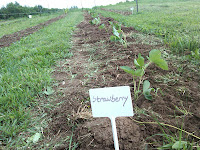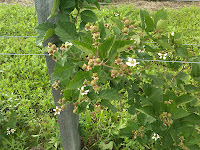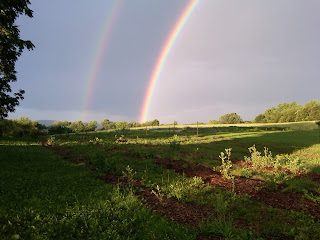For the past few weeks we have been concentrating on getting all plants ready for the winter. Each weekend, we get a little more done and the farm looks a bit more cleaned up.
The blackberry rows are an arduous task, we can only work a few hours on this at a time, so it is taking a while. We not only trim the stems, but control how many stems per bush we want to keep – selecting the strongest and making sure none of the branches shade out other stems. Then we manually pull the weeds around the bush, just within weed-whip range. All the trimmings are dropped between the rows. Eventually, Jeff will run the bush hog through each row, which pretty much destroys even the thickest bramble branch. Then we will run the weed-whip along the rows to clean up the final weeds.
| BEFORE |
| AFTER |
This weekend, Tina finished the final weeding and rototilling on the “Jam Garden”, and planted a few more red raspberries (they were on super clearance at Lowes). This garden now has 3 rows of blueberries, 2 rows of strawberries, and one mixed row of black and red raspberries, plus one gooseberry bush and two black currant bushes.









